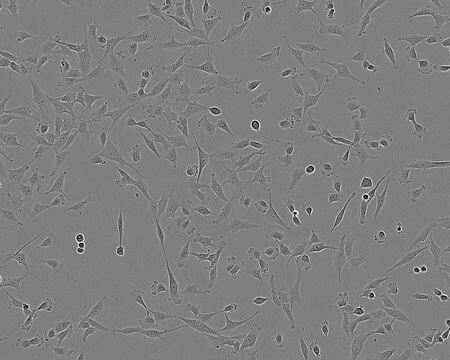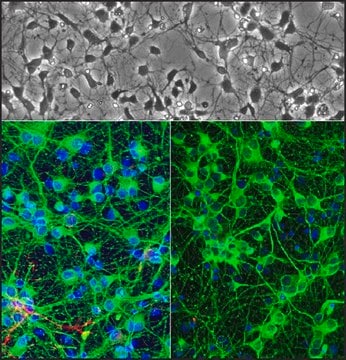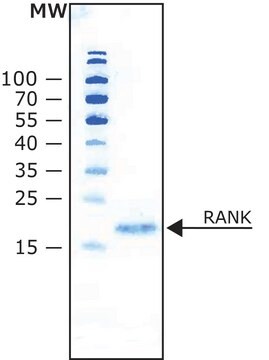SCC134
IMG Mouse Microglial Cell Line
Mouse
Synonym(s):
Immortalized microglial cells
About This Item
Recommended Products
Product Name
IMG Mouse Microglial Cell Line, IMG microglial cells recapitulate key features of microglial cell activation and may be used to study neuroinflammatory responses underlying Alzheimer′s disease.
biological source
mouse
Quality Level
technique(s)
cell based assay: suitable
shipped in
ambient
General description
Reference:
1. McCarthy RC, Lu DY, Alkhateeb A, Gardeck AM, Lee CH and Wessling-Resnick M (2016). Characterization of a novel adult murine immortalized microglial cell line and its activation by amyloid-beta. J. Neuroinflammation 13: 21
Cell Line Description
Application
Immune Response
Inflammation & Immunology
Neuroscience
Neurodegenerative Diseases
Neuroinflammation & Pain
Quality
• Cells are tested negative for infectious diseases by a Mouse Essential CLEAR panel by Charles River Animal Diagnostic Services.
• Cells are verified to be of mouse origin and negative for inter-species contamination from rat, chinese hamster, Golden Syrian hamster, human and non-human primate (NHP) as assessed by a Contamination Clear panel by Charles River Animal Diagnostic Services.
• Cells are negative for mycoplasma contamination.
Storage and Stability
Storage Class Code
12 - Non Combustible Liquids
WGK
WGK 1
Flash Point(F)
Not applicable
Flash Point(C)
Not applicable
Certificates of Analysis (COA)
Search for Certificates of Analysis (COA) by entering the products Lot/Batch Number. Lot and Batch Numbers can be found on a product’s label following the words ‘Lot’ or ‘Batch’.
Already Own This Product?
Find documentation for the products that you have recently purchased in the Document Library.
Our team of scientists has experience in all areas of research including Life Science, Material Science, Chemical Synthesis, Chromatography, Analytical and many others.
Contact Technical Service






